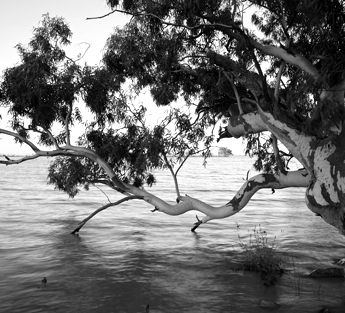Basin re-think urged
 The Murray-Darling Basin Plan requires greater flexibility, experts say.
The Murray-Darling Basin Plan requires greater flexibility, experts say.
Changes may be needed to address the water needs of both people and the environment in anticipation of a drier future, according to a recent review presented at the Murray-Darling Basin Authority's (MDBA) River Reflections conference in Albury.
The basin plan, signed into law in 2012, aims to balance water usage and ensure the sustainability of Australia's largest river system.
Sir Angus Houston, Chair of the MDBA, addressed the conference, noting significant changes since the plan's inception.
He said that a shift is needed from the interventionist approach of the past to a forward-looking plan that accommodates emerging challenges, including climate change.
“It is an opportunity to transition from the much-needed Basin Plan as an intervention to over-allocation during the desperate days of the millennium drought to a plan fit for the future,” Sir Angus said.
An early insights paper from the authority's review identified climate change as a major risk, potentially leading to a drier basin. This poses threats to communities, First Nations objectives, the environment, and sectors such as employment, tourism, and recreation.
The Murray-Darling Basin is a crucial ecosystem, providing drinking water to three million Australians and contributing $45 billion to the economy through agriculture and tourism.
The current plan has returned 2,200 gigalitres of water annually to the river system, falling short of the 3200-gigalitre target.
National Environment Department representative Rachel Connell acknowledged the progress but stressed the need for further adjustments.
“There is still 26 gigalitres to bridge the gap to the sustainable diversion limits,” Ms Connell said.
She added that an additional 422 gigalitres are required to enhance environmental outcomes, and state governments must advance projects related to the sustainable diversion limit adjustment mechanism.
The federal government plans to offer each state $300 million to support communities affected by voluntary water purchases, with the buybacks postponed until the latter half of 2024.
Sir Angus highlighted that climate change impacts would vary across the basin, with a steady drying trend expected in the southern basin, while the northern basin's future remains uncertain.
“We expect the southern basin will have a steady or underlying drying trend and we may already be experiencing this despite recent flooding,” he said.
“In the north, the signals are less clear.”
The River Reflections conference convenes water users and stakeholders from across the 1400-kilometre-long basin, often presenting conflicting views on water usage.
Coinciding with the conference, the federal government has called for a permanent solution to connect the northern and southern Murray-Darling Basin.
Following a recent connectivity trial, the government is encouraging Basin governments to maintain momentum and ensure continuous water quality improvement.
Commonwealth Environmental Water Holder (CEWH) Dr Colin Banks says the trial protected over 41 gigalitres of environmental water through Menindee Lakes and the Lower Darling-Baaka River, enhancing water quality.
He called for changes to ensure environmental water maintains its status as it moves between the basin's northern and southern parts.
“Addressing water quality is a complex problem that needs collective action - and all water users need to lean in, not just environmental water managers like the CEWH,” Dr Banks said.
Since 2020, approximately 90 gigalitres of environmental water have been protected and reallocated upon reaching Menindee Lakes, benefiting southern basin water users.
Dr Banks has called for regulatory changes to ensure this water supports environmental restoration as intended.
“Protecting our held environmental water through the Menindee Lakes can improve conditions in the Lower Darling-Baaka valley and right through to the lower Murray,” he added.








 Print
Print